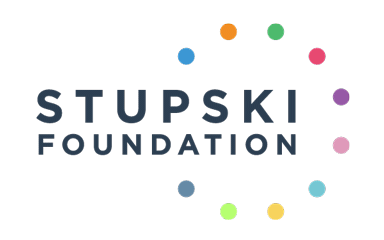As funders, we must invest our financial capital in human capital.
May 2023
It began with a few small grants.
In late 2020, after nearly a year into the pandemic, my team at our foundation offered wellness grants—$5,000 grants to a few of our partners to use at their discretion for staff-focused wellness initiatives. The grants were well-received—sometimes more so than the larger grants we offered—and well-spent, with partners facilitating retreats and staff appreciation events. Then, we began to notice a pattern. The terms “staff burnout,” “exhaustion,” and “compassion fatigue” came up regularly and unprompted in conversations with grantees. Many, including myself, looked exhausted on Zoom calls.
“How can the underserved help the underserved,” one grantee reflected about her staff and the struggle to infuse wellness into intense, often traumatic work.
Our youth intern cohort, whom we hire annually to help inform our grant-making practices, noticed the pattern too. The interns often cited mental health and wellness as the topic they were most passionate about. The youth and the community, per usual, were onto something.
With the swelling mental health needs and our interns’ research guidance, our foundation set aside $3 million to do a larger-scale youth and staff wellness grant initiative. That initiative has received the largest response by all metrics—the most attendees to our information session, the most submitted concept notes, and the most funder interest and engagement. It is easy to be enamored by the superficial metrics that drive our philanthropic field—our foundation’s brand recognition, social media post engagement, the number of attendees to our events, the number of proposals we fund and reject. Yet, the interest metrics tell another story, validating the incredible mental health crisis sweeping educational institutions, community-based organizations, students, and beyond.
Empirical data backs up our experiences. The term “great resignation” has become commonplace when describing labor trends, especially in education and health care. Similar to national trends related to the great resignation, the higher education field is experiencing staffing challenges due to burnout. Last year, more teachers left their profession at rates higher than previous decades. According to a 2022 Gallup poll, the top two types of workers experiencing burnout are K-12 educators followed by university and college educators. In a College and University Professional Association for Human Resources 2022 survey, 60% of college staff respondents reported that they were likely to look for new employment in the next year. The implications of staffing shortages and challenges include increased workload, especially in direct service positions. The trend of less staff with more work perpetuates the cycle of burnout.
It is easy to feel hopeless about the data and the crisis; yet as funders, we are in a privileged position—and have the moral obligation—to do more. We cannot and will not accomplish our field’s grandiose outcomes, such as advancing student success and closing equity gaps, via technical solutions and so-called “business as usual.” We must invest our financial capital in human capital.
Where can foundations start when it comes to investing in mental health and wellness? Here are four practical options foundations can pursue to invest in mental health and wellness:
Make the Case for Mental Health to Your Boards—and Feel Free to Use Our Resources to Do So
Many program officers have shared with us that they also feel strongly about investing in staff wellness but will need to make the internal case to their board. To help them develop that case, our foundation compiled this landscape analysis of data and research about the crisis, potential solutions, and what other foundations are investing in. We wrote this landscape analysis in a style meant for board documents and share it via Google Docs so that others can easily copy and paste parts into their respective documents. Foundations invest significant time and financial resources to develop strategy documents, yet often said materials are only referenced internally a handful of times. We’ve benefitted from the materials other funders have shared with us. In the spirit of field reciprocity, we share our documents so they can help others increase their respective investments and highlight students’ and the community’s calls for solutions that are most impactful for them.
View Wellness Through a Grant-Making Lens
We encourage funders to imagine wellness across their portfolio, which includes each of their grant-making issue areas and grant-making practices. Inspired by the Trust-Based Philanthropy Project, our team views wellness as a value and a lens rather than siloing student mental health into a small subset of grants. What that specifically looks for us is 1) flexible grants that enable grantees to use their grant dollars for wellness purposes; 2) if requested by grantees, integrating wellness practices and retreats into our convening facilitation and 3) transforming our reporting requirements to more informal, verbal conversations. Our foundation has been on a long journey pivoting away from seeing organizations as conduits and data miners to advance “our” outcomes. The pandemic shook off layers of that troublesome philosophy, and we realized, perhaps too late, that we collectively can’t contribute to any positive outcomes without helping our grantees invest in their staff. Additionally, we continue to examine and reconsider how our own practices ironically contribute to significant stress for our grantees.
Evaluate Beyond Quantitative Metrics
In conversations with funders deeply invested in student mental health work, one question consistently arises: How do we measure success? Beyond tracking go-to metrics such as depression and anxiety rates, how do we track—with grantees’ input—what we want to see in the world: thriving, community, sense of purpose, hope, and joy? While those concepts can appear ephemeral, our grantee partners have given us a lot of ideas—from climate surveys to rich qualitative stories—that capture the before-and-after impact on staff wellness investments and tell a richer narrative of renewal, retention, and re-engagement for our partners. In the process, we have learned that if goals and metrics are forward looking and hopeful, so too are the programmatic approaches leading to said outcomes.
For example, one grantee who received support through our Advisor Wellness initiative spoke publicly about the impact of her grant-funded initiative. She described low morale at her campus where several long-time advisors were on the verge of leaving the institution. The grant, which focused on connection, allowed her team to feel a semblance of control and do little things that ended up being significant—a retreat where they could hire a facilitator so that she and her team could fully participate; a team gathering where they could cater from a local restaurant instead of putting together another potluck; and investing in her team’s confidence to make inroads with their administration. “It’s nice to feel comfortably ‘at home’ in my professional field again,” she concluded while also describing her pivot to speaking up and engaging more in campus decision-making. That story reveals meaningful changes beyond narrowly defined numbers that often lead to compliance-driven reports and transactional solutions. We hope to continue to learn and collectively evaluate success beyond the quantitative metrics with fellow funders.
Collaborate
The complexity of the mental health crisis requires an incredible level of local, state, and federal systems collaboration. Arguably, it should be no different for philanthropic funders whose financial resources are desperately needed to combat an issue that is woefully underfunded. Flexible philanthropic funds fill in significant gaps in supporting staff wellness where public dollars often stop short. I’ve witnessed wonderful instances of co-funding and co-learning for student mental health.
For example, my team recently did a call for concept notes as a part of our aforementioned Student and Community Wellness initiative. We received a record number of two-page concept notes for funding, which reinforced the incredible demand for more youth-driven proactive wellness initiatives and investments in staff to stave off burnout. Unfortunately, we will not be able to fund all of them. We reached out to local funders to ask if we can set aside concept notes that fit their foundations’ geographic and programmatic parameters with no pressure to fund—a gesture we offered in an effort to better coordinate with our funder partners and lessen the burden on our applicants to find funder matches. We are excited that two foundations agreed to read concept notes that align with their priorities. We hope to see funder collaboration and application consolidation spread across the sector to fully meet wellness needs for social change leaders.
As foundations, we must hold ourselves accountable for the amount we give, what we choose to give to, and how we give. That includes reflecting on the funder requirements that cause stress for the communities we purport to serve; acknowledging our caregivers’ unseen balancing act of supporting both their communities and themselves; and investing beyond technical solutions and toward the people who steward wellness for their communities.
Now is not the time to lean into old practices and scarcity but to invest with the abundance that philanthropy affords itself. We encourage foundations to give to wellness and to practice wellness with their respective grantees. Every dollar and every effort are necessary to combat this collective, generational challenge.
About the Author
Jennifer Nguyen is the director of postsecondary success at the Stupski Foundation, a spend down foundation based in the San Francisco Bay Area. She leads the Foundation’s grant-making strategies to ensure more students have more say in and complete their postsecondary journeys. Jen has over 10 years of experience working with students at every level of the education system as a college counselor, an academic student services administrator, and currently as an education funder integrating students in decision-making on issues that directly impact them. Along with her work at the Stupski Foundation, she is also a published essay and short story writer.


